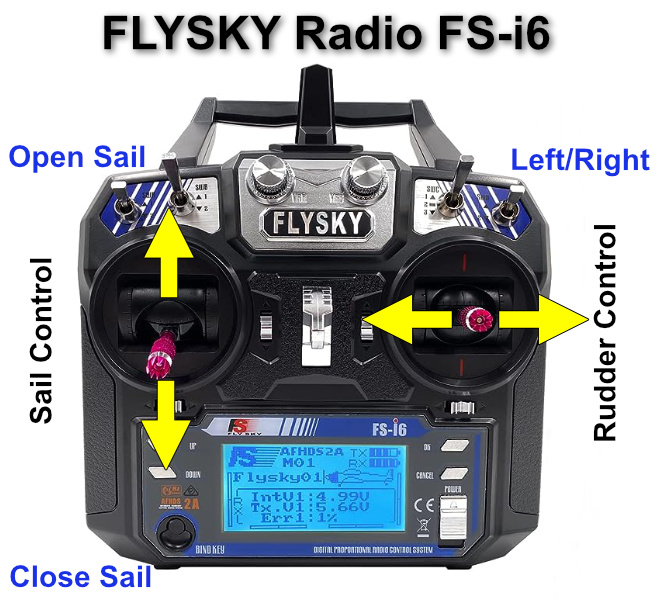
Four key basic actions to master steering an RC sailboat.
When sailing, the route of your boat is usually headed towards your destination or towards a mark of the course when racing. Steering towards a point - acting on the rudder by moving to left or right the joystick positioned on the right side of the controller unit - would be the first step followed by adjusting the sails - gently pushing up or down the stick positioned on the left side of the controller - to maintain good boat speed in relation to the direction of the wind.
FOCUS:
You need to master (knowing & practicing) the basic actions of steering to properly handle your sailboat; this involves to direct, move, accelerate, change direction, stop, luff or bear away. With the combined effects of the sails, the hull may be steered in any direction in relation to the wind. Just remember that your acting on the rudder will bring very different consequences to the movement of the boat.
Basic actions to master steering a radio-controlled sailboat
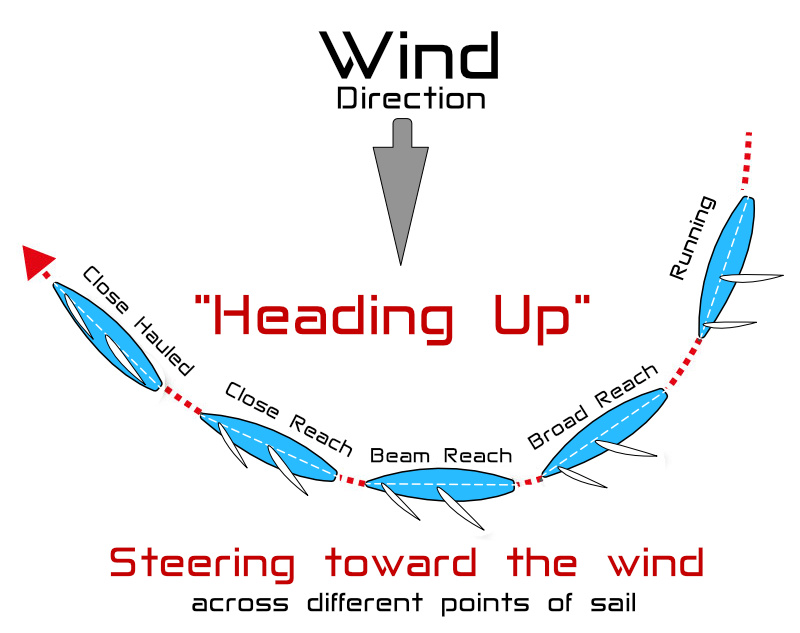
1. Steering toward the wind
To turn the bow of the hull toward the wind is called “heading up” or “luffing up”.
As you steer more toward the wind direction, you have to pull your sails in, "sheeting in", pushing down the left stick on the radio controller. You trim the sails in tighter to keep them full and keep generating lift.
You need to heading up in many situations, here you'll find some examples:
- To start sailing a route more close to the wind direction. Like turning closer to the wind to change your point of sail from broad reach to close hauled, when you cross the starting line after the signal.
- To start luffing to engage a boat you’re close.
- To keep a route more close to the wind when you have to reach a point slightly windward of your route. For example, the mark at the end of your starboard layline.
- To anticipate a veered puff of wind when beating.
- To accelerate running downwind.
- To “protect” your position on wind, when reaching or running downwind, from a boat that is close to you, backward.
- To point the hull into the wind direction, luffing the sails, reducing your speed such as when approaching a dock or an obstacle.
- To stop the boat keeping it “in iron“ (stopped headed into the wind).
A sailboat does not have brakes. The easiest way to stop it is to turn the bow and to keep it headed into the wind direction, and to lower the sails.
- To start your tacking to windward, changing your direction from a close hauled course to the opposite one passing your bow across the direction of the wind.
- To round the downwind mark keeping a close hauled point of sail beating the next windward leg.
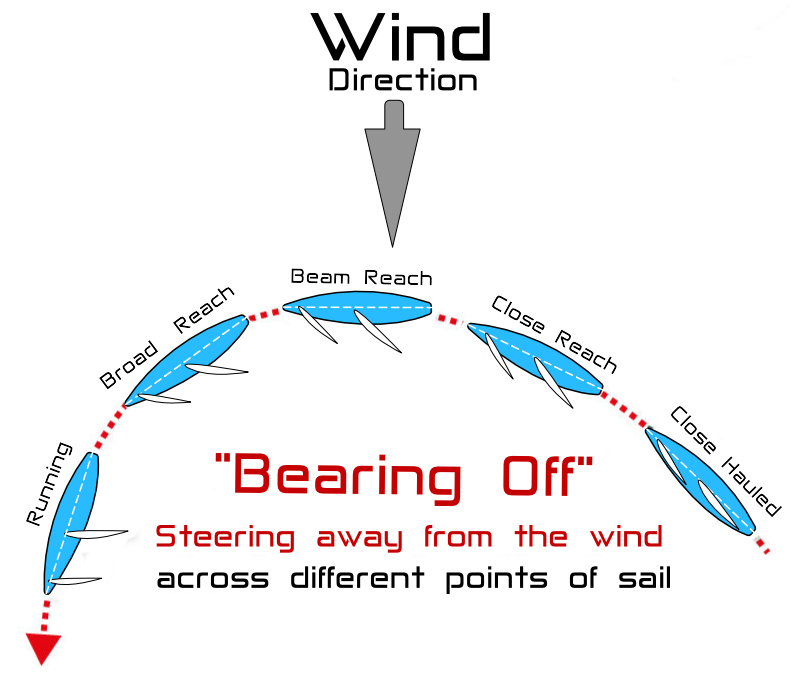
2. Steering away from the wind
To turn the bow of the hull away from the wind is called “bearing away”, “bearing off” or “heading downwind”.
You need to let the sails out, “ease the sheets”, gently pushing up the left stick of the radio controller.
You need to bear off in many situations, here you find some examples:
- To anticipate a backed puff of wind when running downwind.
- To accelerate your boat into a lull of wind, or after a tack when beating.
- To accelerate your boat into a puff when reaching.
- To change the direction (from your close hauled route) when you need to pass astern a starboard opponent boat.
- To bear away rounding the windward mark.
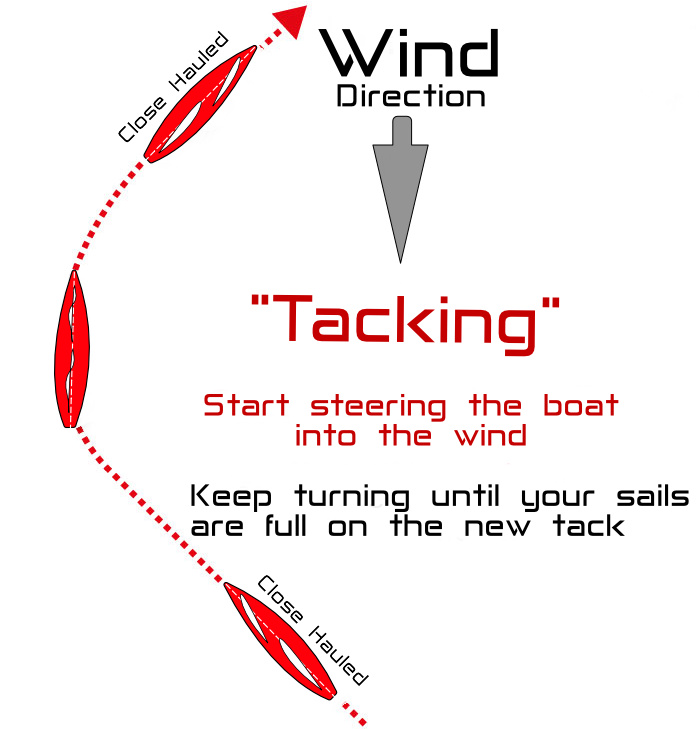
3. Tacking the boat
Tacking your boat refers to turning the bow through the wind so that the wind changes to intersect the sails from one side of the boat to the other side.
The boom (of the mainsail and of the jib in your radio sailboat) will shift from one side to the other when tacking.
A sailboat cannot sail directly into the wind direction due to a conical “no-go zone” of about 45+45 degrees from the direction which the wind is blowing. Tacking is the action you need to practice to get your sailboat to a point that is positioned directly upwind.
Remember, you must turn the boat at least 90 degrees when tacking or you may stall in the wind (put yourself "in irons"). Try to carve a smooth arc in the water, moving the rudder joystick firmly, but avoid sudden, jerky moves.
Ideally you steer the hull to go smoothly from sailing close hauled on one tack to sailing close hauled on the other tack.
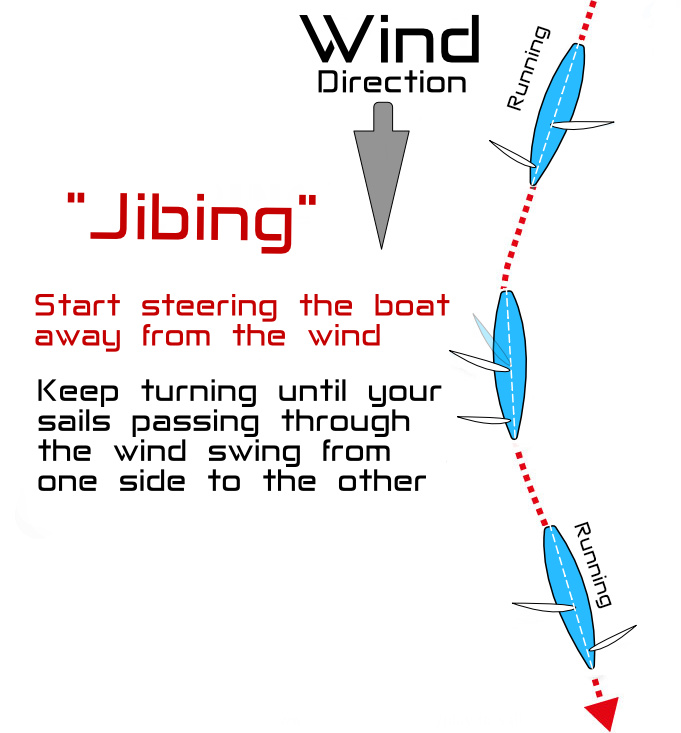
4. Jibing the boat
The opposite of tacking, this basic sailing maneuver refers to turning the stern of the boat through the wind so that the wind changes from one side of the boat to the other side.
Turning away from the wind, or jibing is a way to change your course while sailing downwind.
When performing a jibe, the mainsail boom of your boat will always shift from one side to the other.
